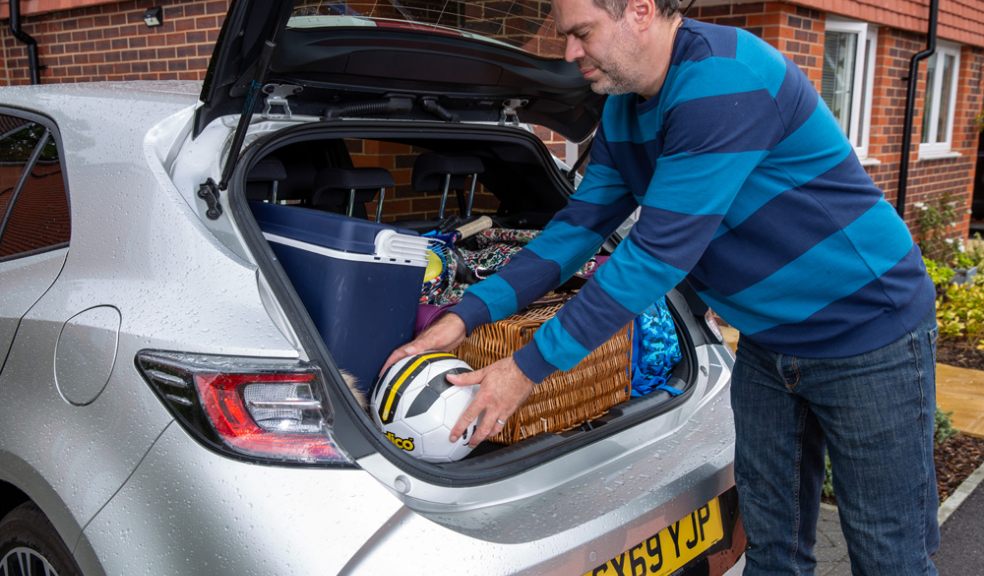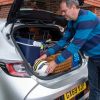
79% of drivers aren’t calm when making a holiday car journey
Packing the car and setting off on holiday can be a chaotic experience for many UK holidaymakers, as a new survey of more than 1,000 UK drivers, by Toyota, shows that almost one in 10 (9 per cent) have had to turn back because they’ve forgotten something every time they’ve gone on holiday. A further 42 per cent admit they’ve sometimes had to turn back.
Younger drivers seem more likely to forget something, as 17 per cent of 25 to 34-year-old drivers said they’ve had to turn back every time, compared with only three per cent of the over-55s.
More than half of those surveyed admit they forget things they want to take on holiday, and items most likely to be left at home are:
- Sunglasses (31 per cent), with 25 to 34-year-olds most likely to forget them (45 per cent)
- Beachwear (14 per cent)
- Underwear (13 per cent)
- Shoes (12 per cent)
- Money (9 per cent)
- Mobile phone (8 per cent)
The Toyota survey also highlights a lack of organisation when it comes to holiday packing, as only 32 per cent of survey respondents said they make a list of what they want to take.
Despite the fact that items are often left behind, over-packing is a common problem which could impact on driving safety: 30 per cent said they either always or sometimes have poor, or no visibility through the rear or side windows. Notably, 44 per cent of people aged 18-24 said they often can’t see out of rear or side windows.
In addition, recommended pre-journey safety checks are often forgotten, and while more than 80 per cent of those surveyed check their car’s oil, water, tyres and fuel levels before setting off, 50 per cent don’t make sure they have their insurance details with them and 60 per cent don’t check if they have their warning triangle, spare tyre, high-vis vest and spare bulbs in the car.
Forgotten items, delayed journey starts, and a packed driving cabin can make for a stressful holiday journey. This is perhaps reflected in the fact that 79 per cent of survey respondents admit they aren’t calm when making a holiday car journey. The leading causes of arguments are:
- Navigation issues and getting lost (39 per cent)
- Getting hungry (30 per cent)
- Journey length (26 per cent)
- Kids making a noise (23 per cent)
- Choice of in-car music (19 per cent)
- Passengers not having enough room, or getting squashed (18 per cent)
- Running low on fuel (8 per cent)
While many factors can make a journey stressful, packing the car needn’t be one of them, as Toyota has got together with John Adams, father-of-two and founder/author of DadBlogUK to put together top tips on the best way to load your car.
John’s tips are illustrated with photos of him loading a Toyota Corolla Hybrid 1.8 Hatchback, which has a 361-litre boot that measures 350mm high and 1,395mm wide.
- Children always want to help with packing but an adult needs to keep control of the process to ensure none of the essentials are missed. Give children a small rucksack each to pack with items such as colouring books and pencils, games (magnetic games are best), favourite soft toys or comforters. These can be kept in the back seat with them for the journey.
- All items should be laid out on a tarpaulin so you can see everything that needs to be packed and to protect the luggage from getting dirty while you are packing.
- If your car has one, lift up the spare wheel cover to make use of all the extra space there. We managed to pack shoes, rollerblades, and two camp beds around the Corolla’s spare wheel.
- Tuck bike helmets and coats into the wells and other gaps on either side of the boot, allowing maximum room for the larger, more rigid items.
- Next put into the boot large flat, robust items like body boards, that can take some weight on top of them. Be sure to use one large suitcase or bag instead of lots of little ones. This way you know the location of where everything is packed and there’s less chance of leaving bags behind or misplacing items, as you only have the one place to look.
- You could remove the parcel shelf to allow that extra bit of room, but make sure your view of the road behind isn’t compromised. and try not to fill the boot any higher than the level of the parcel shelf. This way you can keep valuables out of sight and in the event of an accident, your possessions will stay in place and won’t fly around the vehicle, potentially causing injury.
- Bigger, heavier items should go next. It’s better if they are square or rectangular in shape – suitcases and cool boxes are ideal. These will create a solid foundation for smaller, lighter items to go on top.
- Finish with lighter or delicate items, including footballs and tennis racquets.
- Make sure children have sunshades, headphones and blankets, so they are comfortable and can listen to audiobooks or music. These are ideal for long journeys as they are entertaining for both children and adults. I don’t recommend books or any type of screen-based entertainment as these can make you feel sick.
- Parents should also have a bag or rucksack in the front passenger footwell for essentials such as passports, money, mobile, torch, snacks and a first aid kit. In the Covid era, don’t forget hand sanitiser and face masks for all the passengers, as they’ll need to wear them when stopping at service stations.
- Phones shouldn’t be used by the driver (obviously) but they can be placed in the centre console and charged while driving. Reservation details, directions, essential phone numbers etc may be on your phone, so it’s best to arrive with it fully charged. Passengers may also want to use phones for entertainment during the journey, so keep them to hand and on charge.
- Finally, even though it may be the UK, don’t forget your sunglasses! The Toyota survey shows these are the items most likely to be left behind.













